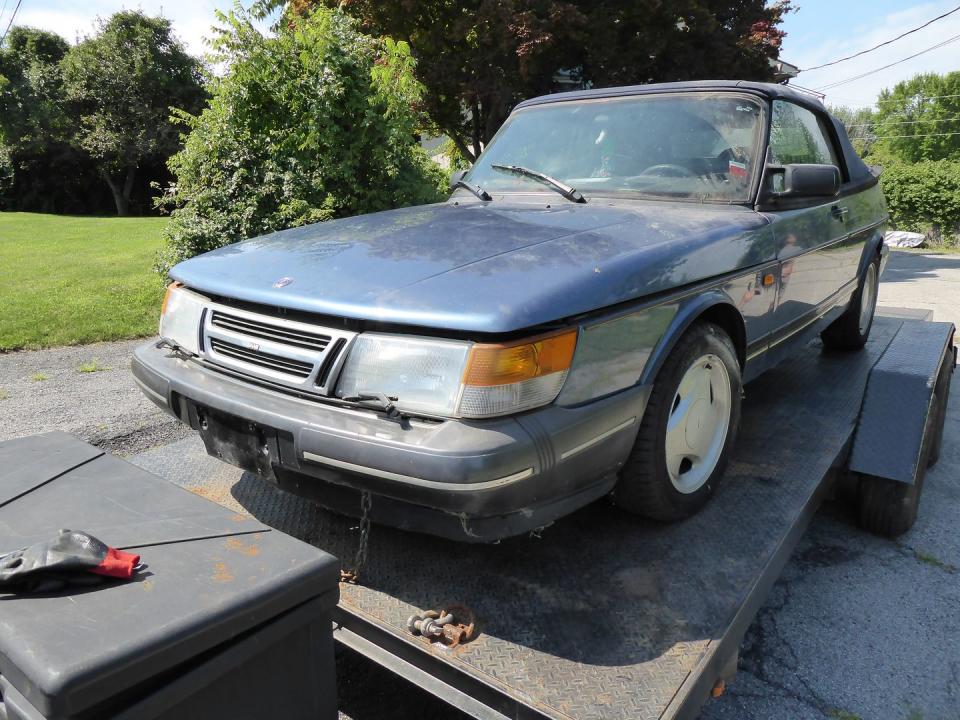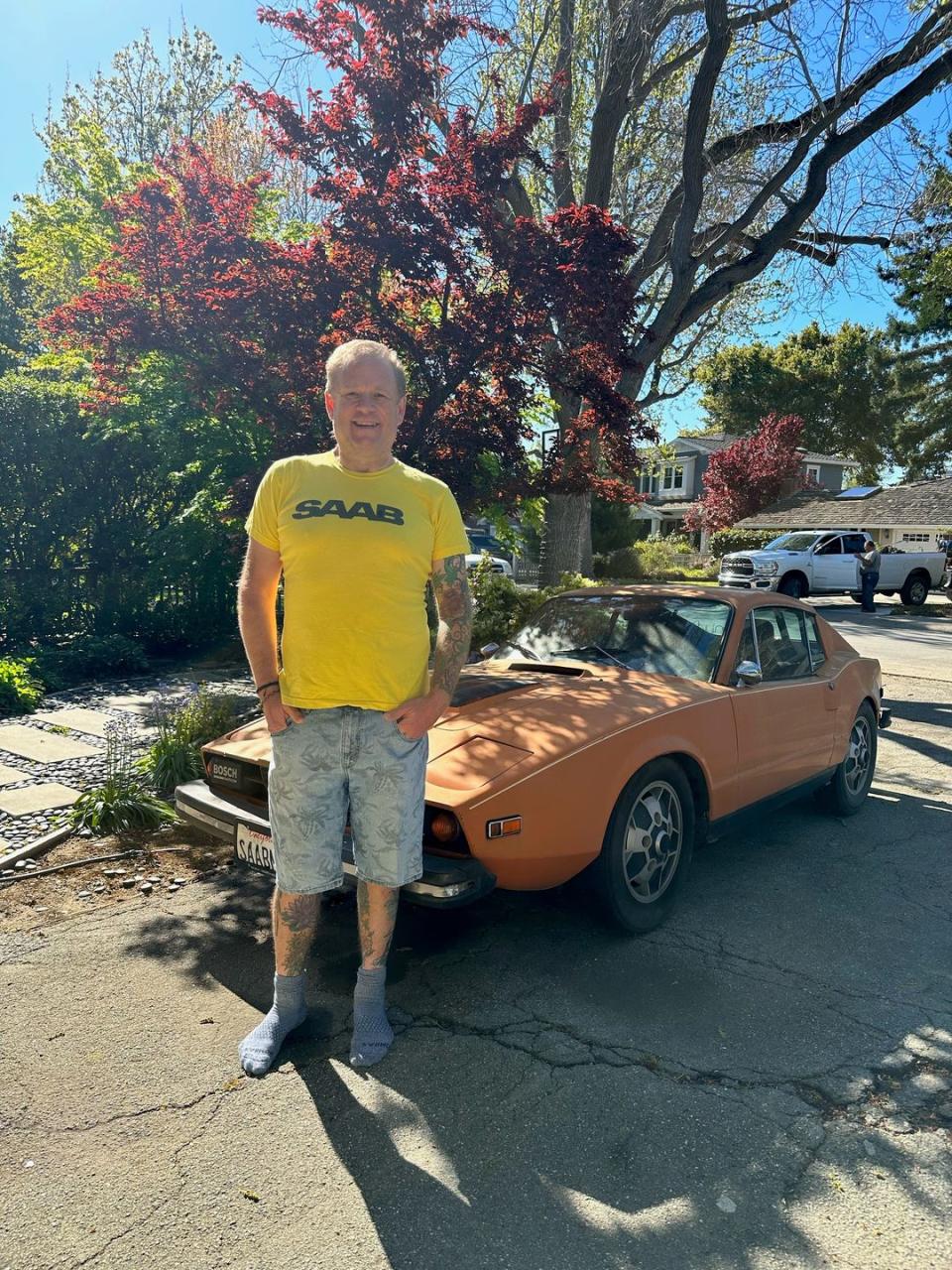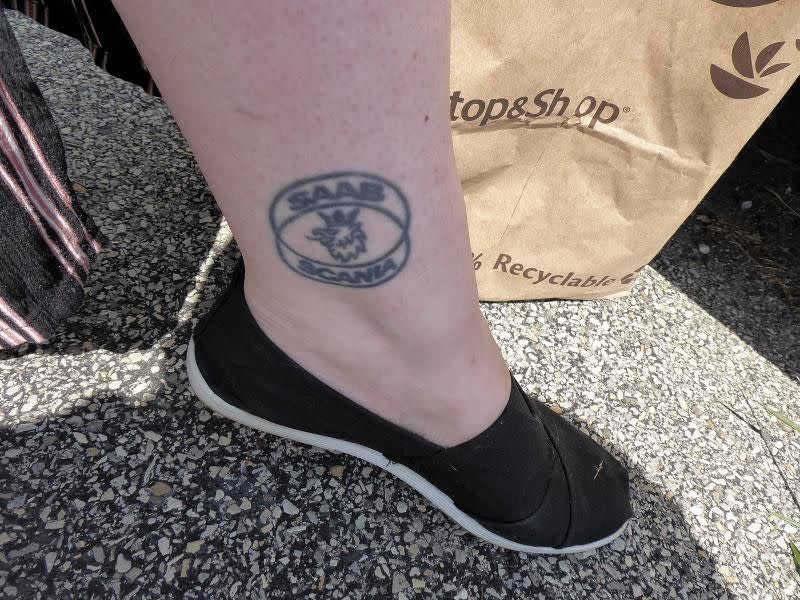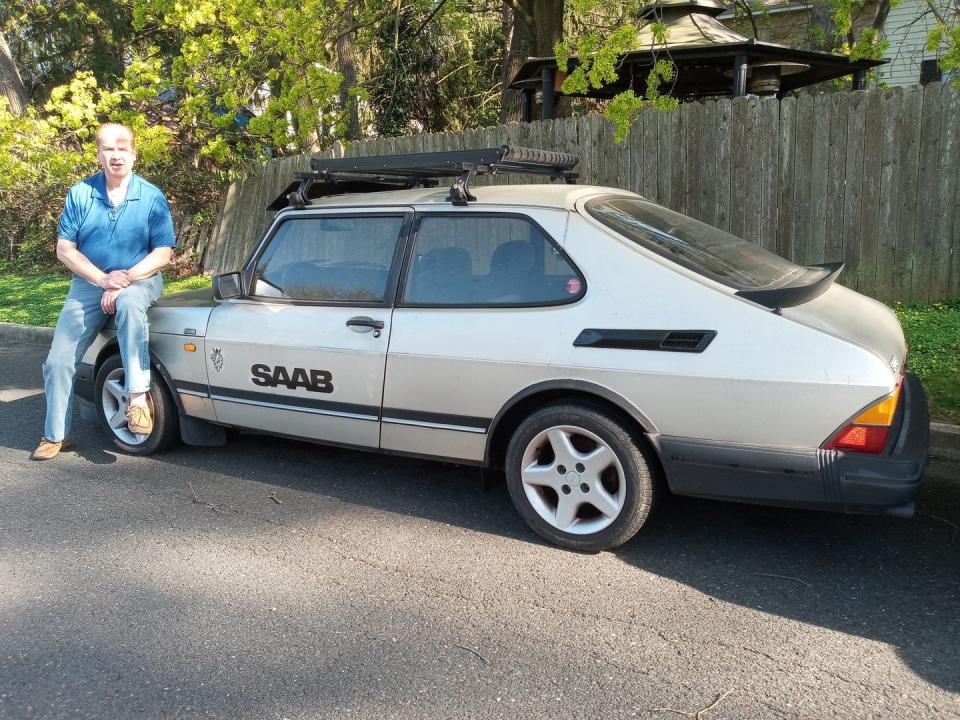The Ardent Faithful Keeping Saab’s Flame Alive

"Hearst Magazines and Yahoo may earn commission or revenue on some items through these links."
I hadn’t been to Sweden or even tasted pickled herring when I bought my first Volvo, a white two-door 122S with a red interior. The car had only 70,000 miles on it, but there was a bit of rust so I paid only $400. The patrician first owner gave me a New Yorker cartoon depicting a guy at a bar saying, “The only thing I love is my Volvo.”
After that, I owned a fleet of 122s, sedans and wagons—plus a pair of sporty 1800s. The second one of those cost me all of $200. It was an ultra-rusty Jensen-built 1964 and it was supposed to be a parts car—until I got it running and registered.
The last 122S was a Euro wagon that started life in Switzerland. I had it for maybe 20 years, through the raising-kids-with-no-time-to-think-about-cars phase of my life. That one was finally sold to a young man who said he’d never eaten a salad—and was driving the 122S across the U.S. to get one in Tijuana, where the Caesar was born.
I wanted something more modern and was still enamored of the Swedes, but did my next purchase have to be a Volvo? No, it didn’t. What about a Saab? I’d briefly owned a 1972 96 sedan, but a failing gearbox prevented a long acquaintance. I had a classic 900 convertible as a test car when I got married. But these were only fleeting encounters.
Briefly, Saab was in business building cars for the U.S. market from 1949 to 2011. Saab stands for Svenska Aeroplan Aktiebolaget, or Swedish Aeroplane Corporation, with the name derived from the aerospace and defense company launched in 1937. “Born from Jets” was a Saab slogan, and aero streamlining was incorporated into the company’s first postwar models.

The 900 Turbo, introduced in 1979, really put the company into contention as a performance-oriented company. College professors bought them, but these were academics who wore racing gloves. By 1989, with the 900 still going strong, GM invested $600 million in Saab, and green-lighted a new and more luxurious version of the 900 in 1994. Some see this as the beginning of the end, but the New Generation 900s have their virtues. GM bought the whole company in 2000, investing another $125 million. GM parts bin Saabs were the result. The company’s quirky uniqueness was fading.
I’d been covering the demise of Saab, including in 2011 interviewing Victor Muller, briefly the company’s chairman, as he searched desperately (and vainly, as it turned out) for funding to keep the brand alive. “What’s happening now is very different from when I was saving Saab from oblivion,” he told me. “Then, I could have failed and I would have been sorry. But now it’s my company, and I’m responsible for 3800 people.”
Saab was soon to shut down—with the Swedish government refusing to intervene—and those 3800 had to find other work. I couldn’t help them by buying a used Saab, but at least I could help keep the legacy alive. I bought a 1996 900 convertible, a European delivery model that was living on a Connecticut island. You have to start somewhere. I didn’t know much about Saab’s model history at that point—even though I once flirted with going to work for the company as a PR guy when it was based in Connecticut. As soon as I bought the 1996, everyone told me I should have gone for the “classic” 1986-1993 900, because anything after that was infected by the General Motors purchase.
The ‘96 was mostly fine, and it had luxuries I wasn’t used to—a five-CD changer, heated leather seats, airbags, ABS brakes. But it also had an ultra-finicky power top with a tonneau motor that kept failing. The top procedure required a primitive computer that few people knew how to program. It was annoying!
So off that one went at a loss, and I discovered—quite by accident, sitting at a local gas station with no “for sale” sign—a nearly pristine five-speed 1991 900 Turbo convertible with 70,000 miles that I paid all of $2400 for, then put in $1000 more to fix what was ailing it. Actually, the red 900 was too nice. The dashboard wasn’t even cracked—and they’re all cracked. I was afraid to park it anywhere. I kept it for hardly any time at all and sold it at a significant profit.
Now I was really well-disposed toward Saabs. There was, and still is, a big disparity between what they sell for as used cars on the local classifieds level and collector automobiles online. There are strong and enthusiastic support groups like Saabnet, Saab Central, Saab Scene and Facebook Groups that will help find you nearly every part, despite that fact that Saab is now more than 10 years gone.
Scott Paterson is the California-based founder of Saabnet, and a driving force behind behind the Saab Club of North America owners conventions, this year in Chicago July 20 to 23. “My first car was a VW Bug I paid all of $200 for, then a Rabbit with a GTI engine,” Paterson said. “In the late ‘80s I had a friend, now my wife, who drove a 1983 Saab 900 Turbo. The experience led me to buy my first Saab, a 1985 base model.”

Paterson had trouble with his Saab’s water pump, and in the ‘80s the only recourse was an all-brands auto forum on Usenet. “I posted there and all I got back was people telling me I should have bought a Ford or Chevy,” he said. “From that I created a mailing list of 100 Saab owners that grew into an online database and, eventually, Saabnet. At its peak, we had a million Saab owners.”
Paterson thought of selling Saabnet in 2012 after Saab failed, figuring that the site would start shedding members at a rate of 20 percent a year. But that never happened—membership has stayed steady. “I underestimated the loyalty to the brand,” he said. “Owners love their cars, and take care of them really well.”
I continued to buy Saabs. There was a blue 900 Turbo convertible I found in New Jersey and spent a year on, then sold it to a Virginia doctor who gave it a ground-up restoration. Now that’s a satisfying outcome. And then the two-fer deal—I followed a lead for a 1993 Commemorative Edition (only 325 made, complete with plaques) up to the Newburgh, New York, area. There I encountered Jess Hayes, a young woman vendor with a Saab tattoo on her ankle. The Poughkeepsie resident was a serial Saab owner.

“My mom found me a 1989 Saab 900 Turbo convertible when I was 15,” Hayes says. “It got broadsided by a pickup in Carmel, but after that I owned five or six Saabs. I love the handling, the design, the little quirks I kept discovering. Saabs are just charming.”
The CE was very rusty and missing reverse gear, but still had its plaque and burl walnut dashboard. It was outside, but in the nearby garage was a quite nice automatic 125,000-mile 1993 turbo convertible. It had been sitting for seven years with a vague starter complaint. I bought them both for $1500. It turns out mice had ravaged the convertible’s instrument cluster while it sat, but the starter was fine—it was the alternator that needed replacing.
There were other needs. I enlisted the help of my friend Ko Denhamer, a Dutchman transplanted to suburban Philadelphia, to get the 900 convertible back on the road. I gave him the CE (but kept that wood dashboard), and he fixed my power top and non-working turn signal, installed a working instrument cluster, and did a bunch of little things. I drove it home, only getting a little nervous as it started to overheat on the approach to the George Washington Bridge. That’s an extreme test. It hasn’t overheated again.


 Yahoo Autos
Yahoo Autos 